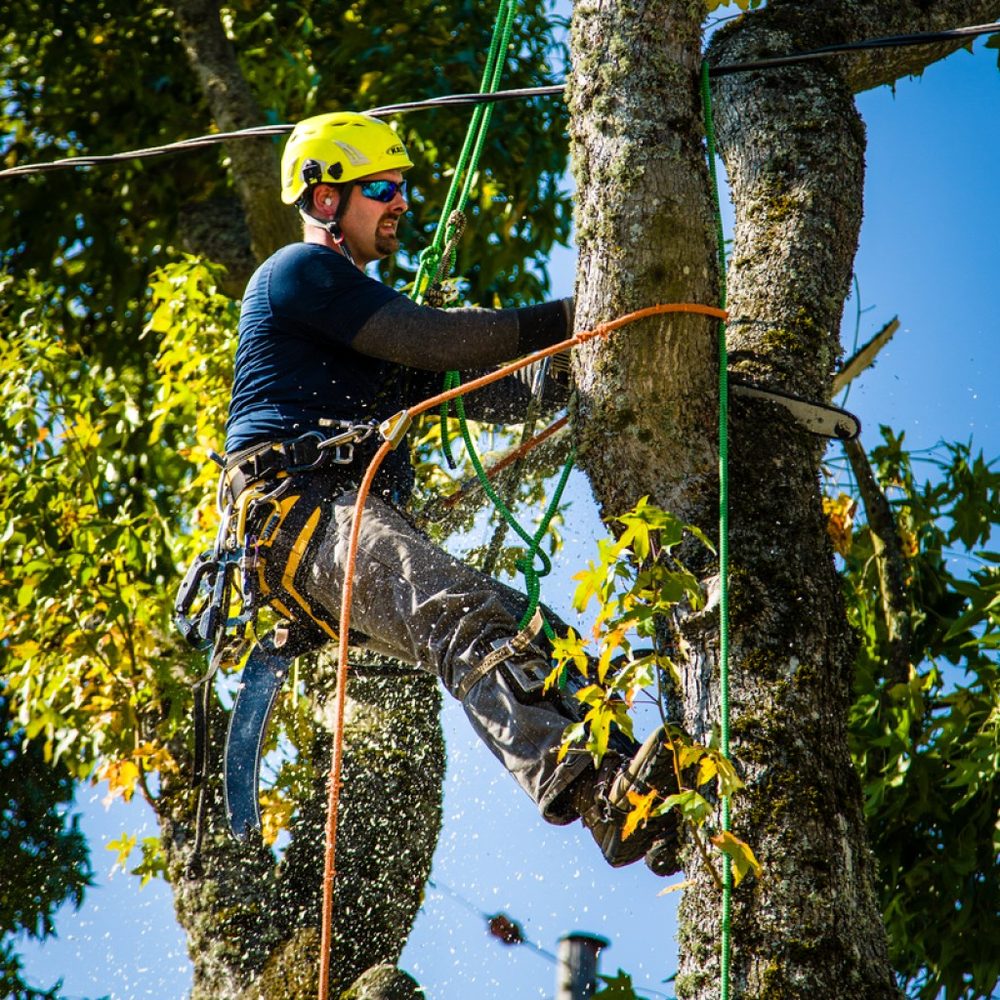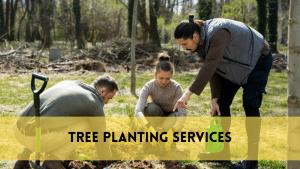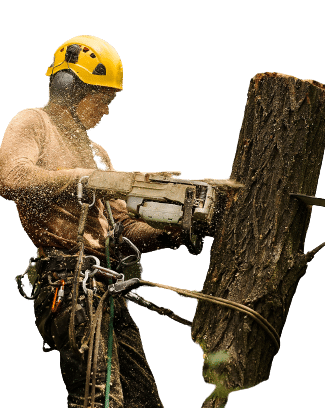What is Moss? Moss is a simple, non-vascular plant that lacks roots, stems, and leaves like traditional plants. It thrives in moist, shaded environments and reproduces by spores rather than seeds. Moss on trees can form green or grayish mats or tufts, especially on the shady side of the tree. In this blog we will learn about how to remove moss from the tree.
Removing Moss from Trees
Now that we’ve established why moss removal is important let’s explore how to do it effectively:
1. Assess the Situation:
Examine your trees to determine the extent of moss coverage. Note any signs of underlying issues like poor soil drainage or compaction.
2. Prune Overhanging Branches:
Increase light exposure by trimming nearby branches that may be casting excessive shade on the tree.
3. Improve Air Circulation:
Trim or thin out branches to enhance air circulation around the tree, reducing moisture accumulation.
4. Adjust Soil Conditions:
If soil compaction or poor drainage is an issue, consider aerating the soil and amending it with organic matter to improve drainage.
5. Manual Removal:
Gently scrape moss off the tree bark using a soft brush or your fingers. Avoid using abrasive tools that can damage the bark.
6. Use a Moss Killer:
Apply a moss-killing solution containing iron sulfate or potassium salts of fatty acids to the tree bark. Follow the manufacturer’s instructions carefully.
7. Monitor and Maintain:
Regularly check your trees for moss regrowth and address any underlying issues promptly to prevent recurrence.
Why Does Moss Grow on Trees?
Moss thrives in conditions that are conducive to its growth:
- Shade: Moss prefers low light conditions, making tree trunks an ideal habitat.
- Moisture: Adequate moisture levels, often due to rainfall or humidity, are necessary for moss to thrive.
- pH Levels: Moss prefers slightly acidic It’s relatively safe for the environment when used as directed.
- Compacted Soil: Soil compaction around tree bases can lead to poor drainage, creating favorable conditions for moss.
Impact of Moss on Trees
While moss itself does not harm trees, it can indirectly affect their health:
- Reduced Sunlight: Thick moss mats can block sunlight from reaching the tree’s bark, hindering photosynthesis.
- Moisture Retention: Moss can trap moisture against the tree’s bark, potentially leading to rot or disease.
- Bark Damage: As moss attaches itself to tree bark, it can weaken the bark’s structure over time.
Preventing Moss Regrowth
Preventing moss from returning is as crucial as its removal:
- Prune Trees Regularly: Maintain proper tree structure and air circulation through regular pruning.
- Address Soil Issues: Continuously improve soil quality by amending it and addressing compaction or drainage problems.
- Monitor Light Levels: Keep an eye on the tree’s surrounding landscape to ensure it receives adequate sunlight.
- Maintain Good Tree Health: Healthy trees are less likely to attract moss. Proper watering, fertilization, and pest control contribute to tree vitality.
Best moss killers:
- Iron Sulfate: Iron sulfate, also known as ferrous sulfate, is a popular and effective moss killer. It kills existing moss and also provides essential nutrients to the surrounding grass and plants. and it’s harmless
- Potassium Salts of Fatty Acids: These salts are an eco-friendly option for moss control. They work by disrupting the cell membranes of moss, ultimately causing it to dry out and die. These are less harmful
- Copper Sulfate: Copper sulfate is a chemical for moss control. It’s particularly effective in aquatic environments and can be used to control moss in ponds, lakes, and in watery areas
- Zinc-Based Products: Some zinc moss killers are available in granular or liquid form. They work by gradually releasing zinc ions, which inhibit moss growth.
- Natural Sunlight: Increasing sunlight exposure to moss-prone areas can be an effective way to discourage moss growth
- Homemade Solutions: Some homemade moss-killing solutions include mixtures of vinegar or lemon juice with water can be beneficial. They may also harm surrounding plants, so use them with caution.
Related Posts:
Safety is a top priority
When removing moss from trees. Here are essential safety guidelines to follow:
Protective Gear: Wear appropriate safety gear, including gloves, safety glasses, and long-sleeved clothing
Ladder Safety: When working on tall trees, use a sturdy ladder and ensure it’s on stable ground.
Fall Protection: If you’re working at heights, use fall protection equipment, such as a safety harness and lanyard, to prevent falls.
Tool Safety: Use the right tools for moss removal, such as soft brushes or moss scrapers
Chemical Safety: If you’re using moss-killing chemicals, strictly follow the manufacturer’s instructions, wear protective gear, and keep the area well-ventilated
Lift Properly: When lifting heavy bags of moss or equipment, use proper lifting techniques to avoid strains or injuries.
Stay Hydrated: Maintain hydration, especially in hot weather, by drinking water regularly.
First Aid Kit: Keep a basic first aid kit nearby in case of minor injuries.
Wildlife: Be mindful of wildlife that may have made the most of their habitat, and avoid disturbing them
Conclusion
In summary, removing moss from trees is a straightforward process that involves a combination of manual and chemical methods. By following these steps, you can effectively restore the health and vitality of your trees, ensuring they thrive in their natural environment.




